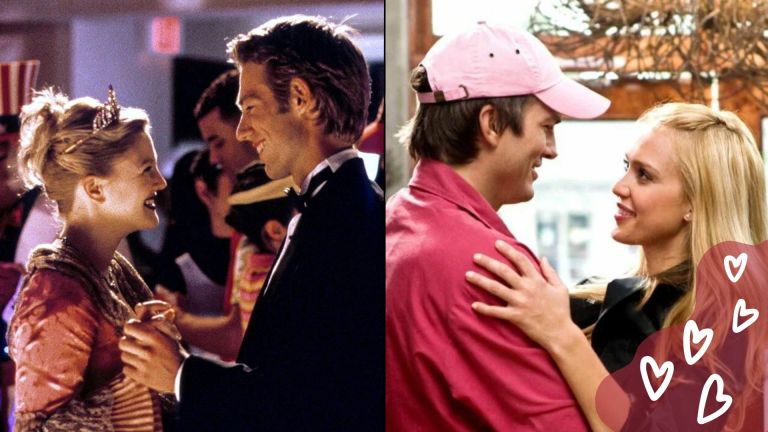5 Television Shows That Normalized Fatphobia In Comedy
For some reason, television writers are still writing aggressively offensive fatphobic narratives for television.
For some reason, television writers are still writing aggressively offensive fatphobic narratives for television. I’m talking about the “skinny makes you happy, and not skinny makes you sad” storyline we often see on-screen today. We have seen this narrative played out time and time again with the goal of laughter. But this is all at the expense of offending, exploiting, and isolating anyone that doesn’t fit into society’s singular acceptable body norm.
So, how many people are these television writers offending? For American women, Plunkett Research estimates that 68% of American women wear a size 14 or above. I was not surprised that I couldn’t find any data on plus-size men, because when has anyone referred to a man as plus-sized? Plus-size was created for women because society typically does not focus on the physical appearance of men while relentlessly obsessing over that of women.
I then got to thinking where the term plus-size came from and why skinny people aren’t referred to as minus-size. I believe the name plus-size was created to visually package people that aren’t typically pushed center stage within media. When we see someone different than the characters we see on television or the people in the magazines, we label it. We do this to trick ourselves into thinking we understand someone foreign to us.
We also do this with race, sexuality, and gender.
The list grows as to how much is wrong with this messaging, especially on screen, as it motivates body obsession to a large and extended audience. It also sends a message that being “skinny” can solve a person’s problems and anything else creates them. We are so past due to start accepting normal bodies as the norm instead of the edited and often altered bodies showcased in media, advertising, and on the big screen.
All bodies can be desirable. This descriptor is not reserved for a small few.
This is not only a long-standing problem, but it is a current problem. The line has been crossed and continues to be passed by television writers today.
See for yourself. Here are five shows, one as recent as last year, that used fatphobic dialogue on-screen. They did this while putting skinny actors into fat suits at the expense of shaming anyone that wasn’t defined as a societal version of thin—and it needs to end yesterday.
Friends—Monica
While undeniably hilarious at times, Friends lacked diversity in race, sexuality, gender, and of course, body type. Although the main characters were all commercially skinny, Monica occasionally put on a fat-suit so that she could play Fat Monica. The role was made for flashbacks to show the audience her younger self that had a “comedic eating obsession,” as if eating disorders can be humorous.
This character also sent a message that body appearance was a direct result of eating habits, which is not always the case. There are plenty of bodies that are more impacted by family genes than a Kit Kat obsession. Skinny does not mean healthy.
Mad Men—Betty
Although Betty’s storyline was intended to hide her real-life pregnancy, actress January Jones still had to wear the fat suit even after giving birth. The story tied into Betty’s depression, showing yet again that plus-sized bodies are linked to negative experiences. This sends a message that when Betty is happy, she’s skinny, and when she’s depressed, she’s fat.
Mom—Jill
So apparently the pregnant thing is a trend, as NBC’s Mom recycled Mad Men’s idea and hid actress Jaime Pressly’s pregnancy by putting her into a fat suit. Her outdated storyline gave her an eating disorder, showing once again that being her size had to come with a problem. Is anyone else seeing a theme here? Similar to Friends and Mad Men, Mom is another show cast of exclusively skinny, straight, white actors that shamelessly offends anyone outside this category.
New Girl—Schmidt
Although some of the comedy is great in New Girl, at what cost? The hilarious Max Greenfield plays the incredibly offensive and insecure character Schmidt, who uses his fat past as an excuse for his current bad behavior. Although Schmidt grows on you throughout the seasons, the actor frequently puts on a fat suit to show viewers how miserable he was when he was fat. He blames his past weight to being unhappy and constant overeating. Again, we have a show that tells anyone in the audience that is not considered skinny to look at their eating habits. Instead of creating meaningful storylines for plus-sized actors, television shows continue to throw skinny actors into fat suits for laughs and to illustrate a negative past. This type of character also motivates body obsession, extreme dieting, and eating disorders while associating a skinny body type as evolved and happy.
Insatiable—Patty
What’s most alarming about the worst example of them all comes from a show that was created in 2018, with a second season last year. Patty, played by Debbie Ryan, is a high school teenager that is abusively bullied for her weight at school. How does this character solve her weight problem? She gets hit in the face, suffers from a broken jaw, and while her jaw is wired shut, she is successfully able to starve herself for months into a skinny body. This show sends the message that starving yourself is the solution to thinning out, and becoming skinny will make you hot and popular, therefore desirable.
Television writers must do better—they must do so much better. As visibility grows on-screen to expand inclusivity for characters that resemble and access real-life people, we need to stop balancing it with offensive characters. Many times, myself included, people laugh without even realizing what they’re laughing at. These toxic storylines put the majority down and motivate body obsession, whether consciously or subconsciously, for the sake of laughs—and it must end.
Be very careful about what you watch, support, and laugh at. It’s time we accept normal as the norm.





